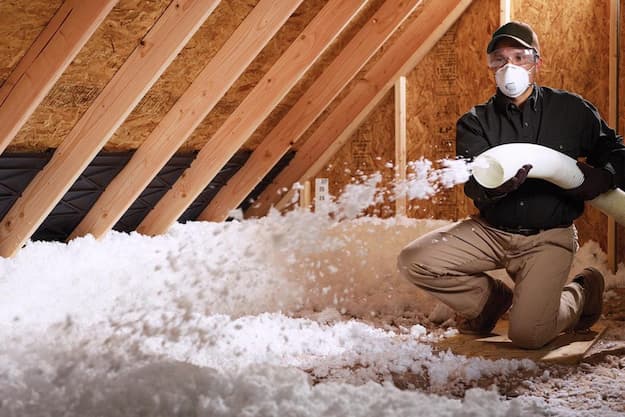In case you have had your attic insulation installed more than 15 to 20 years ago it is advisable to get it replaced. This is because your original insulation R-value most likely has dropped from recommended 60 to 20 – 30. So, this thickness does not stop or prevent your home from heat loss. By adding replacing your old insulation you will be able to improve your home efficiency substantially. The new insulation will ultimately help you save hundreds of dollars on energy bills each year.
Can I Add new Insulation over old?
According to professional attic insulation experts, you can put new insulation over the old unless of course, it is wet. In case your attic insulation has a water damage, then you need to repair the roof problem first before installing new insulation. Having wet insulation is problematic, and it will lead to mould, mildew and sometimes rotting of your ceilings and roof rafters. While professionals will do all the work for you, it is important to keep the following in mind.
It is important that faced insulation is not placed on top of the existing insulation in your attic. It is vital that any new batt or roll insulation that is installed over existing insulation in the attic be without vapour retarder. The vapour retarder on top of or between layers will trap moisture. Any existing batt or roll insulation in your attic needs to have the facing against the attic drywall floor or no facing at all.
- It is possible to install batt or rolled insulation or blow in cellulose insulation on top of the old insulation.
- Your insulation needs to be rolled out perpendicular to the joists and unfaced rolls used
- Vermiculite insulation that is found in the attic needs to be tested. In case the test is positive for asbestos, it needs to be removed by a professional
- You need to air seal before a new installing since the air leaks will hinder the performance of insulation and significantly reduce the energy efficiency in your home.
Pros and cons of adding new insulation over old Insulation
Pros
- Improves your R-value rating
- Saves on the cost that would have otherwise been used on removing the old insulation to add a new layer of insulation in your attic
- It ensures all gaps are filled; this means there will be no heat loss
- It’s a simple job that can be completed in a matter of hours
Cons of adding new Insulation over old
- Water damage- your old insulation may have suffered water damage, getting new insulation over the old will only increase the chances of getting mould. Mould growing in the presence of moisture. You need to consider changing your insulation in the upper portion of your home in case of floods, even if it was limited to a few feet off the ground.
- Pest Infestation- if you had a pest infestation that you sorted out, it would be best to get rid of the old insulation before setting in the new. However, not every pest infestation point towards a removal.
- Finding mould and humidity – it doesn’t matter if there has been a flood or not, humidity from your bathroom, kitchen or other living spaces are enough to form a mould colony. Getting new insulation over this could be hazardous to your health.
- Age Advancement- Old insulation needs to be removed because materials that were used to make it may be considered dangerous today such as asbestos. Adding new insulation over this type of old insulation could be a potential health hazard for those installing and living in the premises.

